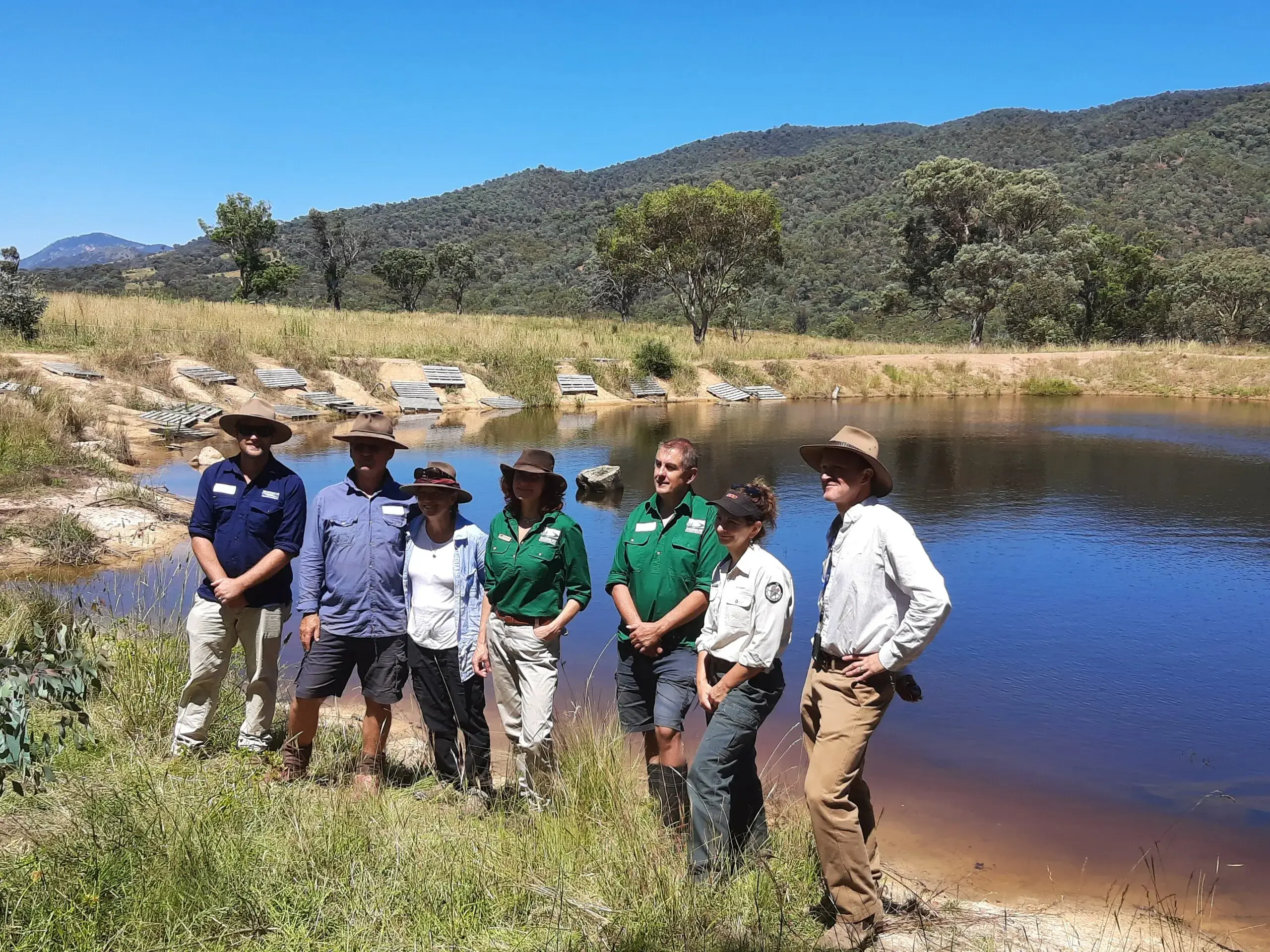Land enhancements to improve drought and flood resilience
Hoping to improve drought and flood resilience (as well as soil health and biodiversity), Gleneden Family Farm (QLD) and Amberly Farm (ACT), with the support of their local land and resource management agencies, upgraded the land works they inherited with the purchase of their property.
We recently chatted with Fiona and Rohan Morris of Gleneden Family Farm to learn more about their land works for improving resilience. We also attended a Field Day at Amberly Farm. Owners John and Carol Lilleyman shared some of their excellent results from dam enhancements with other landowners in the ACT region.
Amberly Farm, Kambah, ACT
In the heart of the ACT in the suburb of Kambah, John and Carol Lilleyman of Amberly Farm are producing and selling pasture-raised poultry and eggs using regenerative practices. As part of their successful enterprise, they are rebuilding the soil and landscape function on their farm.
Recently, the Lilleymans hosted a field day to look at one aspect of their work relating to drought resilience – enhancing the farm dams to retain more water, increase biodiversity and improve their farm productivity. At Amberley Farm, four of their pre-existing nine dams have been enhanced as part of a grant from the Future Drought Fund.
During the day, John and Carol Lilleyman talked about how the work was implemented in line with their ethos of using what’s at hand. For example, no earthmoving equipment was used. The main tools were mattocks and shovels and almost all the materials used came from the farm itself.
The day also highlighted how works that can improve drought resilience are also significant to the ecosystem, including animal health and biodiversity.
Martine Franco from the Southern ACT Catchment Group (SACTCG) spoke about the importance of riparian zones and how enhancing dams can improve conditions in rivers downstream. This is one of the reasons Amberly Farm was chosen for the dam enhancement project, as it is close to the Murrumbidgee River corridor.
ACT Vet Officer Kylee Driver, drew the links between poor-quality water and the negative impacts on animal health, and thus the production benefits from effective water systems.
Finally, Martin Lind from SACTCG spoke about the amazing water insects finding habitat in the Lilleyman’s dam, and the role they play in supporting biodiversity of larger animals on the farm.
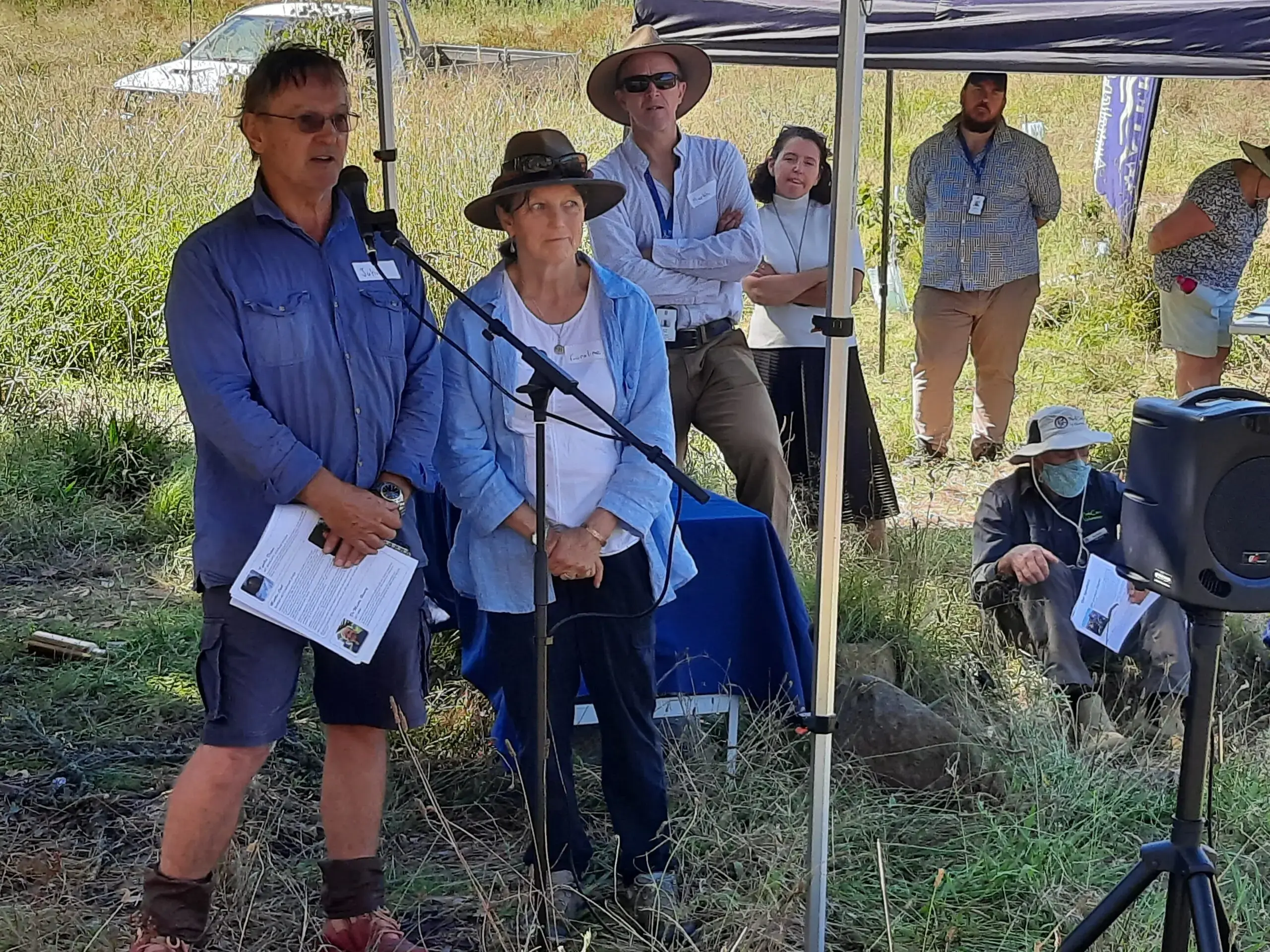
Gleneden Family Farm, Maryvale, QLD
Moving off the family farm, Rohan and Fiona Morris, with two young children and high hopes, purchased their own property in 2016. They chose their farm in the Southern Downs for many reasons: soil type, access to population centres, water security, landscape diversity, visual appeal and because roughly 2/3 of the 250 hectares is forested hills. Rohan and Fiona reasoned that the soil quality and species diversity in these areas would still be in good condition, and thus could help regenerate areas of the farm that had previously been used intensively for hay fodder production.
Their property also has a series of about fifteen contour banks that had been constructed across the sloping landscape. Subsidised by the state government in the 1950s, these banks were designed to address water erosion of soil on ploughed, sloping land by moving water around the landscape. Hence, the contours were constructed with a slight fall towards the side gullies.
As Fiona explained to Soils for Life, this policy was designed to help the farmers,
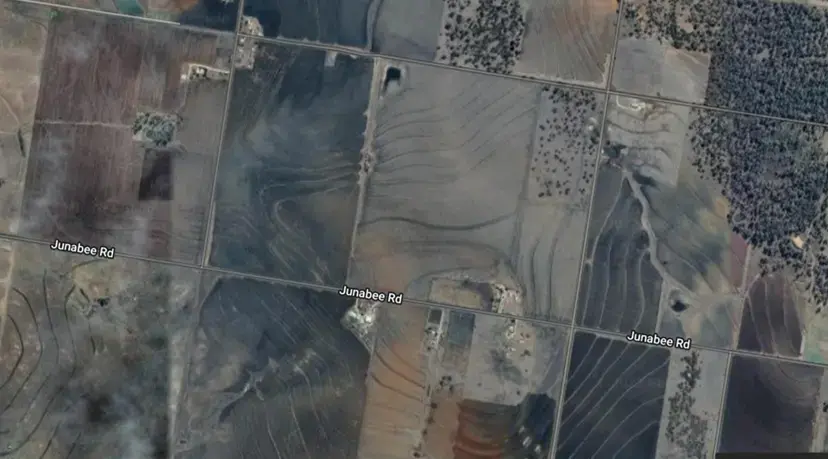
Contours common to the cropping region of South East Queensland, designed in the 1950s (Google Earth)
”‘The contours were subsidised and designed to help cropping farmers to save the soil from water erosion on ploughed sloping land. Our black basalt soils are very “dispersive”. When water hits them, they erode. They have very fine clay particles that move easily. The farmers were using conventional cycles – plough, grow your fodder crops, lie fallow - in places with the best soil and up the slopes too. As a result, you've got gravity, wind and water eroding soil on ploughed slopes. Having contour banks in this region of the Downs was considered essential. These contour banks were designed to hold the soil and shed the water.’
The old banks successfully moved the water across the ploughed slopes, but had the unintended consequence of moving the erosion to the point where water concentrated and accelerated from the end of the banks into the gullies. The gullies and creek beds suffered extreme erosion, and the remaining soil in the field was less able to stay hydrated. Unfortunately, a year after the Morrises bought their farm, the most recent multi-year drought started. The dry soil conditions significantly slowed pasture growth. The Morrises had to sell much of their stock. The remaining cattle were kept by holistic planned grazing. The remaining sheep were brought off the paddocks and fed vegetable waste sourced from an organic packing plant. As the drought wore on, they decided to take one last chance to keep their remaining stock, by buying three months’ worth of hay (drought feeding hay is generally not an economic proposition, complete destocking is often more sensible, but preserving a core of organic breeding stock was important). The fires close by in 2019 nearly saw this gamble go up in flames, with the hay truck arriving on the same day as the fire. To their fortune, their property was spared and the drought broke soon after, with three week’s hay left in the shed.
Recognising the heart-wrenching drought challenges of farmers in their area, the Condamine Headwaters successfully received Smart Farm grants to run Natural Sequence Farming workshops for their members. The Morrises put their hand up, and in early 2020 they hosted a three-day workshop attended by twenty locals.
During the hands-on workshop, participants constructed Natural Sequence Farming ‘swales’ (on contour banks). These land works are often constructed at higher elevations on the property, to help hydrate the land below. The swales spread water across the landscape, along a level contour line. This feature spreads and slows the flow of water down the landscape to allow time for the water to infiltrate. When the swales are full, the water exits via spillways on ridges where it will spread, rather than in the gullies where it concentrates and accelerates. In extreme rainfall events the level swale spills along its whole length, which can be hundreds of meters.
In addition to these swales, they used a method to turn the existing 1950s contour banks, which act as “drains”, into a water saving feature, by ‘blocking the drains’, Fiona explains. During the workshop, participants watched as small dams were built at the bottom of each bank, where it drained into the gully, and at intervals up each bank.
Since the breaking of the drought, Gleneden has transformed from a dry, brittle, brown landscape to a greener, more fertile one. Talking about Natural Sequence Farming, Fiona said,
”‘This is one of the ways we are rehydrating our landscape. I must admit I was a little bit sceptical, but I’m not anymore after seeing it work so effectively. It’s amazing how much water the new works catch. I'm so glad they're there, especially after this rain. All the water they’ve held would have just run down the gullies,
”causing gully erosion and contributing to the floods downstream. Now the water is held high in the landscape and has time to infiltrate and move slowly through the soil profile. Our soil will be wetter for longer and the gullies will run for weeks rather than hours.’
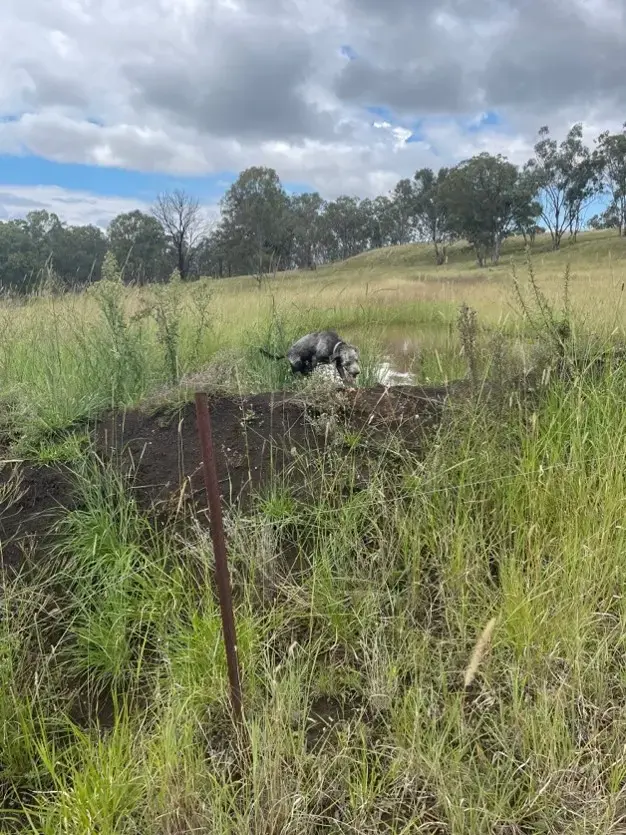
Natural Sequence Farming swales (left) and contour dams (right) slowing the flow of water in the recent heavy rain.
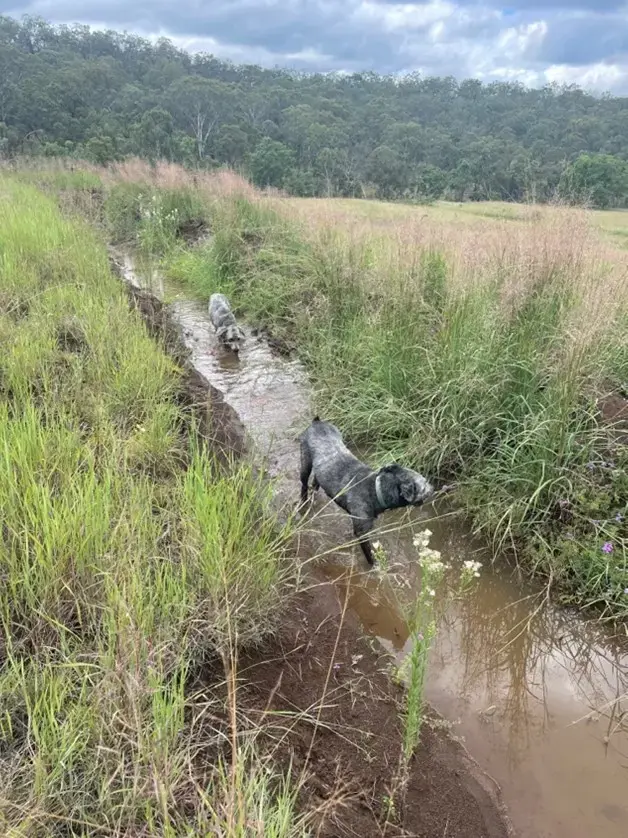
Rohan walked the property with Soils for Life, and Smithy and Wilber – their two Tasmanian Smithfields – to see how the contour dams and the Natural Sequence Farming swales were holding up in the ‘atmospheric river’ this March. We found all of these land enhancements securely holding the water, with plenty of regrowth and regeneration happening within the gullies, largely undisturbed by the torrential rain.
Partnerships with NRM and Landcare
Partnerships with Landcare and NRM has been crucial to the land enhancements on both the Morris’s and the Lilleyman’s farms. Aside from supporting the grant applications for farm work and for workshops, these support organisations can often lend equipment necessary for land enhancements. For example, Condamine Headwaters Landcare purchased the laser level necessary for the Natural Sequence Farming work, and can lend this out to members and other interested farmers.
When farmers in regions come together like this, it creates opportunities for collective, catchment-wide rehydration, in which everyone would fare better in a drought.
This Soils for Life case study is supported by the Department of Agriculture, Water and Environment, through funding from the Australian Government’s National Landcare Program.
Interested in learning more?
Soils for Life is currently developing a case study on Amberly Farm with the results to be released later this year.
As well, farm dams are a focus of the ANU Sustainable Farms program. The program has some great resources for landowners looking to get the most out of their dams.
The Upper Mooki Rehydration project with 21 landholders is also a good example of farmers in regions coming together to creates opportunities for collective, catchment-wide rehydration, in which everyone would fare better in a drought.
You can also contact your local Natural Resource Management (NRM) authority to see if funding is available to support land enhancement on your farm.
If you are in South East Queensland, the Condamine Headwaters Landcare is hosting another workshop on Natural Sequence Farming, around April, when the paddocks dry out a bit.



